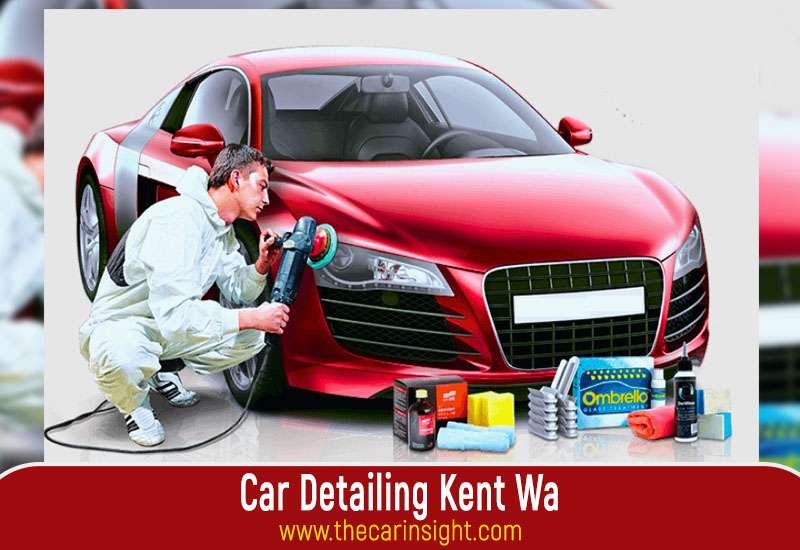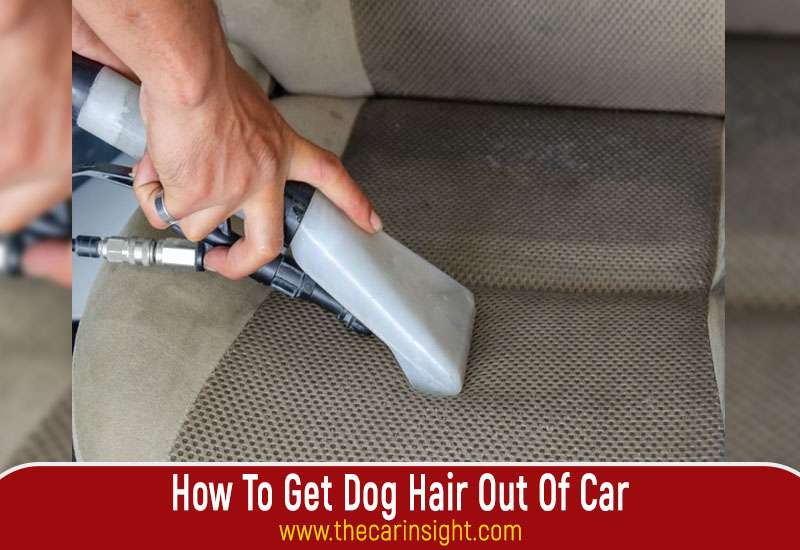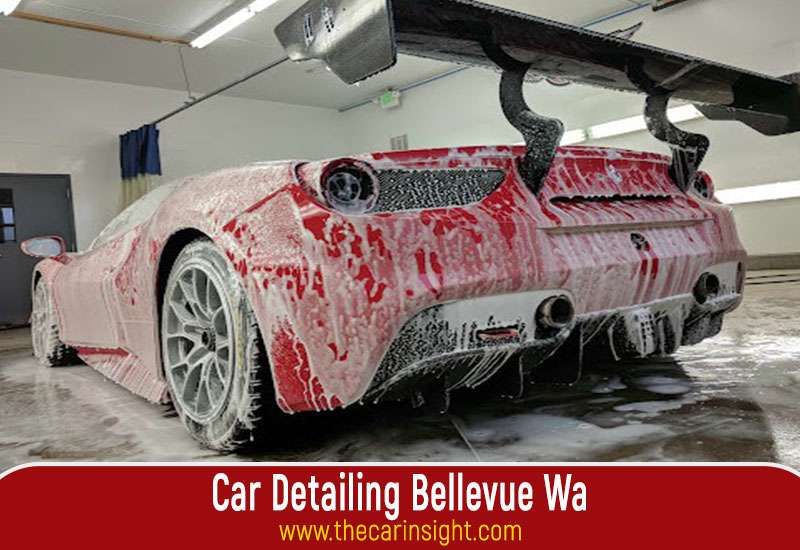Rubbing Compound Vs Polishing Compound: Rubbing compound is used for removing scratches and oxidation while polishing compound is used for enhancing shine and glossiness on a surface. Rubbing compound and polishing compound are both essential in auto detailing, but they serve different purposes.
Rubbing compound is designed to remove surface imperfections such as scratches, swirl marks, and oxidation from painted surfaces. It is more aggressive and abrasive compared to a polishing compound. On the other hand, a polishing compound is used to enhance shine and restore the glossiness of a surface.
It is less abrasive and helps to refine the finish after using a rubbing compound. Understanding the difference between these two compounds can help you achieve the desired results when working on your car’s paintwork.
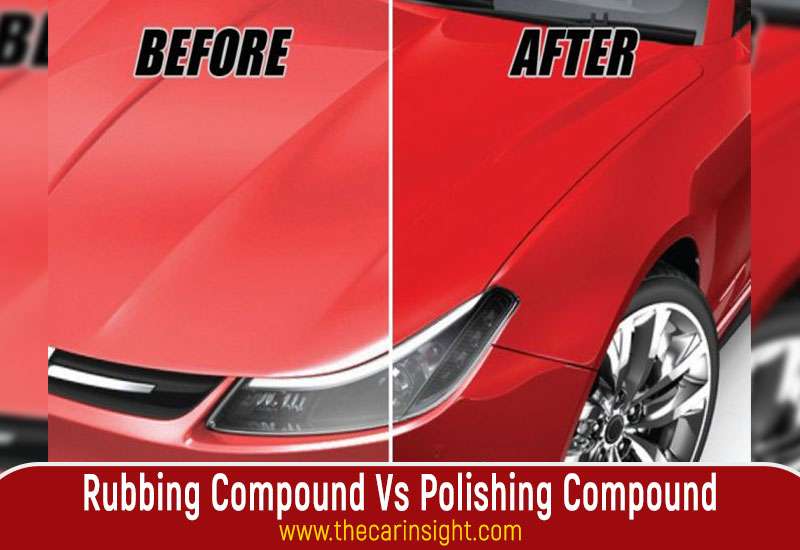
Purpose
Discover the true purpose of rubbing compound versus polishing compound in automotive detailing. Learn the distinctions between the two products for effective paint restoration and surface enhancement. Elevate your knowledge to achieve superior results in your car care routine.
What These Compounds Are Used For
Rubbing compound and polishing compound are two common products used in automotive detailing to restore the shine and smoothness of a vehicle’s paintwork. While these compounds serve a similar purpose, they are applied at different stages and target different imperfections on the surface.
The primary purpose of rubbing compounds is to remove deep scratches, oxidation, and other blemishes that cannot be easily eliminated through regular washing and waxing. This abrasive compound contains a mixture of chemicals and abrasives that work together to level the paint surface, effectively eliminating imperfections. Rubbing compound is typically the first step in the paint restoration process.
On the other hand, a polishing compound is used to refine the paintwork further after using a rubbing compound. Its purpose is to remove finer scratches, swirl marks, and hazing left behind by the more aggressive rubbing compound. The polishing compound contains mild abrasives that gently smooth out the paint surface, enhancing its clarity and glossiness.
While both compounds share a common goal of restoring the paint finish, they differ in terms of aggressiveness and the imperfections they target. The rubbing compound is more aggressive and is ideal for removing deep scratches and heavily oxidized paint. Polishing compound, on the other hand, is milder and is suitable for refining the surface after using a rubbing compound or addressing less severe imperfections.
Summary Table: Rubbing Compound vs. polishing Compound
| Rubbing Compound | Polishing Compound |
|---|---|
| Used to remove deep scratches, oxidation, and blemishes | Used to refine the paintwork and remove finer scratches and swirl marks |
| More aggressive and abrasive | Milder and contains gentler abrasives |
| First step in paint restoration | Used after rubbing compound or for less severe imperfections |
Conclusion
In conclusion, rubbing compounds and polishing compounds serve distinct purposes in automotive paint restoration. Rubbing compound is the go-to choice for addressing deep scratches and heavily oxidized paint while polishing compound is used to refine the surface and eliminate finer imperfections. By understanding the differences between these compounds and their respective uses, you can achieve professional-level results in bringing back the shine and luster of your vehicle’s paintwork.
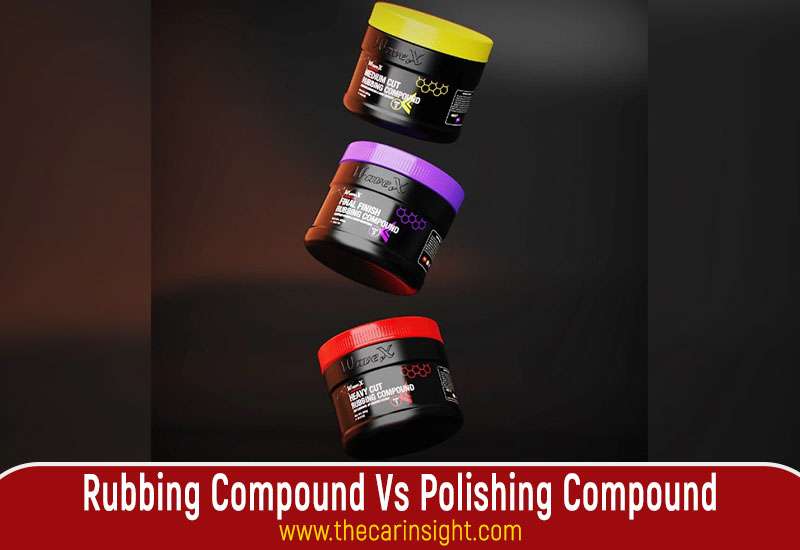
Key Differences
Abrasiveness
Rubbing compounds tend to be more abrasive than polishing compounds.
Finishing Effect
Rubbing compounds are great for removing deep scratches while polishing compounds are better for adding shine and smoothness.
When To Use Each
Understanding when to use rubbing compound and polishing compound is crucial for achieving the best results when restoring the finish of your vehicle. While both compounds serve a similar purpose of enhancing the appearance of your car’s paint, they are designed for different scenarios. This section will guide you through the scenario-based applications of rubbing and polishing compounds, allowing you to make an informed decision based on your specific needs.
Scenario-based Application
Knowing when to use a rubbing compound or polishing compound requires an understanding of the condition of your car’s paint and the desired outcome. Here’s a breakdown of when you should use each:
If your car’s paint has scratches, oxidation, or heavy swirl marks:
- Start by using a rubbing compound to tackle the deeper imperfections on the surface of your car’s paint.
- Rubbing compounds contain abrasive properties that allow it to remove a thin layer of the clear coat, effectively reducing or eliminating imperfections.
- Apply the rubbing compound with a foam or microfiber applicator pad, using light to moderate pressure in a circular motion.
- Regularly inspect the surface to ensure you’re not removing too much clear coat, as excessive rubbing can result in paint damage.
If your car’s paint has minor imperfections, hazing, or light swirl marks:
- Use a polishing compound to refine the scratches and restore the clarity and gloss of your car’s paint.
- The polishing compound has finer abrasives compared to the rubbing compound, allowing it to remove smaller imperfections and revive the shine.
- Apply the polishing compound with a foam or microfiber applicator pad, using gentle pressure in a circular or back-and-forth motion.
- Regularly inspect the surface and adjust your technique as needed to achieve the desired results.
In summary, a rubbing compound is best suited for repairing deep scratches, oxidation, and heavy swirl marks, while a polishing compound is more appropriate for addressing minor imperfections, hazing, and light swirl marks. Remember to always follow the product’s instructions and test on a small, inconspicuous area before proceeding with the entire surface. With the right compound and technique, you can bring back the brilliance of your car’s paint and enjoy a showroom-worthy finish.
Effect On Different Surfaces
Paint
Rubbing compounds: Remove scratches, oxidation, and swirl marks on painted surfaces.
Polishing compounds: Enhance shine and gloss, ideal for restoring dull paint.
Clear Coat
Rubbing compounds: Can thin the clear coat if not used carefully.
Polishing compounds: Safely remove light imperfections without damaging the clear coat.
Application Techniques
Rubbing compounds and polishing compounds are essential for restoring and maintaining the shine of vehicles. Proper application techniques play a critical role in ensuring the desired results are achieved. Below, we will go over the usage methods for each compound, providing valuable insight into the application process.
Proper Usage Methods
When it comes to rubbing compounds, it is crucial to apply moderate pressure in circular motions. Start with a small amount and gradually increase if needed. Conversely, when using a polishing compound, opt for light pressure and also utilize circular motions. It’s important to work in small sections to ensure thorough coverage and an even finish.
Tools And Equipment
When it comes to restoring the shine and luster of your car’s paintwork, choosing the right tools and equipment is crucial. Using the right products and methods can make a significant difference in achieving professional-looking results. In this section, we’ll discuss the recommended tools for the application of rubbing and polishing compounds to help you make an informed decision.
Recommended Tools For Application
When working with rubbing or polishing compounds, having the right tools at your disposal can streamline the application process and ensure optimal results. Here are some essential tools and equipment to consider:
- Microfiber Applicator Pads: These soft, lint-free pads are perfect for applying rubbing and polishing compounds evenly and without leaving behind any scratches.
- Dual-Action Orbital Polisher: If you’re dealing with moderate to severe paint imperfections, a dual-action polisher equipped with the appropriate pads can help you achieve consistent results with less effort.
- Buffing Pads: A set of various buffing pads, including cutting, polishing, and finishing pads, can cater to different stages of paint correction and ensure a smooth, glossy finish.
- Painter’s Tape: Use painter’s tape to protect trim, plastic, and rubber parts from accidental compound splatter during the application process.
Frequently Asked Questions Of Rubbing Compound Vs Polishing Compound
When Should You Not Use Rubbing Compound?
Rubbing compounds should not be used on delicate or sensitive surfaces, such as clear coats or plastic. Avoid using it on freshly painted surfaces or vehicles with thin or damaged paint. Additionally, it is not suitable for removing deep scratches or repairing severe paint damage.
Can You Polish With Rubbing Compound?
Yes, you can use rubbing compounds to polish surfaces. It effectively removes scratches, oxidation, and imperfections.
What Is The Disadvantage Of Rubbing Compound?
The disadvantage of rubbing compound is that it can be abrasive, potentially damaging the paint surface.
What Is Rubbing Compound Used For?
Rubbing compound is used to remove scratches and imperfections from car paint surfaces.
What Is The Difference Between Rubbing And Polishing Compound?
Rubbing compound is abrasive for heavy scratches. The polishing compound is less abrasive for minor scratches.
Can I Use a Rubbing Compound To Remove Swirl Marks?
Yes, rubbing compounds is effective in removing swirl marks caused by improper cleaning techniques.
Which Compound Should I Use For Deep Scratches On My Car?
Choose rubbing compound for deep scratches as it is more abrasive and can tackle tough imperfections.
Conclusion
The choice between rubbing compound and polishing compound depends on your specific needs. Rubbing compound is best for removing deep scratches and blemishes while polishing compound is ideal for enhancing the shine and clarity of the paint surface. Understanding the differences and using the appropriate compound can result in a professional-looking finish for your vehicle.
So, next time you’re tackling paint imperfections, choose wisely and achieve the desired results.

